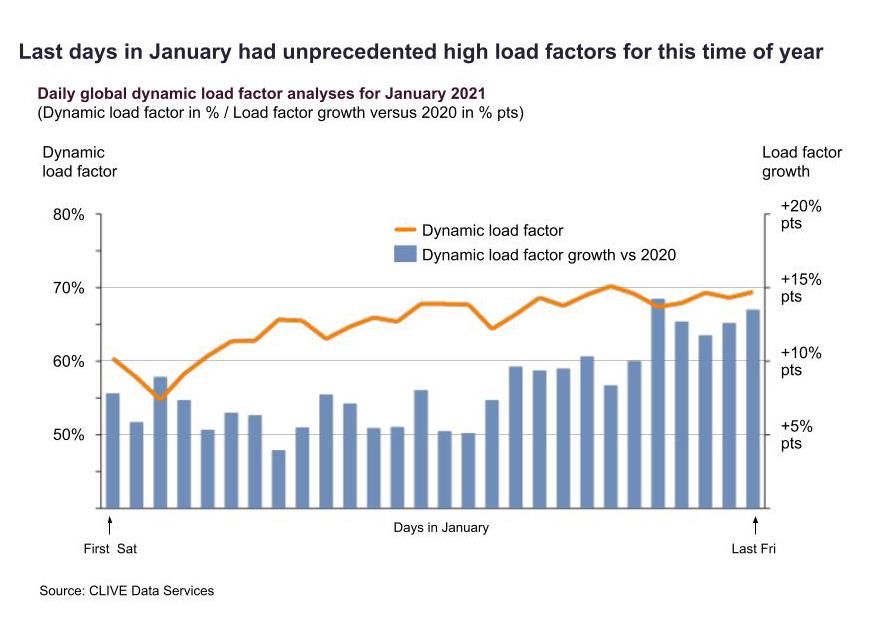The global air cargo saw ‘exceptional’ load factors in the last two weeks of January, according to the latest industry statistics from analysts CLIVE Data Services and TAC Index, which signalled a positive start to 2021.

The results showed 2021 beginning with an unusual New Year ‘peak season’ — similar to ‘November volumes in January’ as demand and supply were closely matched, according to the latest weekly market data from industry analysts CLIVE Data Services and TAC Index.
Dynamic cargo load factors for January stood at 66%, up 9% percentage points year-on-year. However, it noted that the last two weeks of the last month saw an ‘exceptional’ 10-15% percentage points rise over the same days of January 2020.
Slow road to recovery continues
“Strong, and historically atypical, demand for the start of a new year indicates that air cargo’s slow road to recovery continues. Global volumes in January 2021 were -4.5% compared to the same month a year ago, similar to December, and maintained month-on-month improvements following the -13% gap in year-on-year chargeable weight data reported by CLIVE Data Services in November,” the industry analysts said.
Available global air cargo capacity in the four weeks to 31 January was -18% compared to 2020.
Niall van de Wouw, managing director of CLIVE Data Services, said flights in January were ‘very full for the time of year’, which might be related to consumers spending more on (high value) products than services such as travel and leisure at the start of the year.
“January’s load factors might be considered odd compared to previous years, but they are also not surprising when you look at the current dynamics in the industry. One airline recently mentioned to me that they had ‘November volumes in January’ – but it’s not free money. The market is very demanding and constantly changing, also because of the regulatory COVID landscape,” van de Wouw added.
“Airlines are having to ‘fly by sight’ as you simply cannot know what is around the next corner.”
“When we read that some carriers are telling customers they cannot guarantee their capacity commitments in January and February, this tells you how full flights are,” he continued.
“On a lane level, for example, westbound and eastbound load factors across the Atlantic were higher in January than they were in November and December at 88% and 76% respectively. Capacity is tight and we sense no underlying currents which will swiftly change this.”
Rates continue to rise
Meanwhile, TAC Index data showed that prices out of Asia dropped in the first couple of weeks of January before regaining last ground in the last part of the month.
It noted how HKG-EUR airfreight rates dropped by -14% from Jan 4-18 before picking up by 12% to the month end (Feb 1); HKG-DFW declined -21% from Jan 4-18 but rose again by 17% by the end of the month; and PVG-NOA (North America) dropped from Jan 4-18 by -29 % but by Feb 1 had recovered again by 19%.
“On some sectors ex Hong Kong and China, if we looked only at the monthly change in airfreight rates, we would see a near -25% drop in January over December,” said TAC Index business development director Robert Frei.
“If we were not aware of the strong increase in the last week of January, we could possibly assume that, despite the upcoming Chinese New Year, there is a continuing negative trend, but market consensus has it that rate negotiations between shippers, forwarders and carriers are much more short term again (weekly or even per shipment) and, as a result, the number of spot rates has increased drastically compared to previous years. In our numbers we see big spreads,” he added.